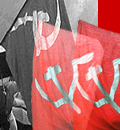 |
| Reports on Maoists |
| Timeline of the Maoist Insurgency |
|
|
| 2006 |
|
|
|
The Seven Parties Alliance and CPN (Maoists) have signed a second memorandum of understanding. |
|
Truce: The Communist Party of Nepal (Maoist) has announced that it will observe unilateral ceasefire within the Kathmandu valley with effect from Monday evening until further notice.
The Communist Party of Nepal (Maoist) declared a unilateral ceasefire for three months after requests from newly appointed Prime Minister G.P. Koirala. |
|
In a statement Maoist top leader Prachanda said that Maoist rebels are now prepared to talk to the new government.
Peace
talk between Nepal Government and Maiosts began on 26 May 2006 at
4:00pm in Kathmandu.
A 25-point Code of Conduct governing the ceasefire was signed by Home Minister Krishna Sitaula on behalf of Nepal Government and Krishn Bahadur Mahara, Coordinator of the Maoist Team. Emphasizing the commitment of holding Constuent Assembly pursuant to the 12-point consensus between Seven Party Alliance and Maoists, an agreement to publisize the Code of Conduct was reached. |
|
The Goverment and the Maoist rebels reached a 4-point agreement on 15 June 2006. The Government and the Maoist rebels agreed to hold summit talks between PM Koirala and Maoist Chairman Prachanda; form a truce monitoring team (Ceasefire Code of Conduct National Monitoring Committee); request the UN to assist the truce monitoring team and to monitor human rights; and to hold further talks under observers. |
|
The Maoist rebels extended their ceasefire by three months in a bid to support peace talks aimed at ending their decade-old insurgency that has killed thousands. "Expressing the commitment and responsibility (for peace) our party has extended the ceasefire for another three months," Maoist top leader Prachanda said in a statement.
A high-level United Nations team visiting Nepal to explore UN support for the country's peace process met senior leaders from the Communist Party of Nepal (Maoist) and welcomed news that they will extend their ceasefire for another three months. |
|
Nepal's interim government and Maoist rebels have reached agreement on how they want the United Nations (UN) to help with peace efforts, representatives from both sides said. The United Nations received separate requests from the Government of Nepal and the country's Maoists calling for wide-ranging UN assistance, including ceasefire and human rights monitoring, in a peace process that aims to end 10 years of conflict. |
|
The
Maoists have decided to extend their three-month-long ceasefire which is
going to end on 29 October 2006 stating that the ceasefire -considering
the ongoing peace talks - is "automatically extended".
The government and the Maoists have been seeking a point to stamp a permanent ceasefire pact, a member of the Maoist talks said. |
|
The
Maoists and the government have agreed to manage weapons under a single-lock
system of their respective commanders. However the place will be under
a strict and close-circuit sensitive monitoring of the UN, which will be
given free access to the storage, according to reports. Accordingly, equal
number of weapons from both sides would be locked up within a single lock-up
storage system. Once the detailed political pact is signed, the UN would
start its technical monitoring procedure.
The
deal lists a timetable as per which the Maoists will be joining the interim
government on December 1, 2006. The deal includes agreement on all issues
such as fate of monarchy, arms management, interim constitution, interim
legislature, interim government and electoral system for Constituent Assembly. The agreement was signed by Maoist chairman Prachanda on behalf of his party. Likewise, on behalf of SPA, Prime Minister Girija Prasad Koirala, UML general secretary Madhav Kumar Nepal, NC (Democratic) president Sher Bahadur Deuba, People's Front president and deputy Prime Minister Amik Sherchan, general secretary of Nepal Sadbhavana Party (NSP-Anandidevi) Bharat Bimal Yadav, president of Nepal Workers and Peasants Party (NWPP) Narayan Man Bijukchhe, Leftist Front leader CP Mainali have signed the agreement. |
|
The
government of Nepal and Communist Party Nepal-Maoist have signed a historic
peace accord (Comprehensive Peace Accord (CPA)), declaring a formal end
to a 10-year rebel insurgency. By making the ceasefire permanent, the accord
declares the armed insurgency that began since February, 1996 as officially
over.
Main
features of the CPA, which includes 10 main sections are e.g. - Formal end of the Maoists' People's War that began in 1996 - No political rights to King; his property to be nationalised under public trusts
Comprehensive
Peace Agreement held between Government of Nepal and Communist Party of
Nepal (Maoist)
|
|
Disarmament deal: Maoist rebels and Nepal's interim government signed a formal agreement on the management of both sides' arms and weapons. The "Agreement on Monitoring the Management of Arms and Armies" include the cantonment of Maoist soldiers and their weapons at designated sites. Agreement
on Monitoring the Management of Arms and Armies
|
|
15/16
December 2006 Interim constitution: SPA and Maoist leaders finalized the 169-article draft constitution. The interim constitution will come into force only after the process of arms management is complete. |
 |
|
Nepal Conflict |


